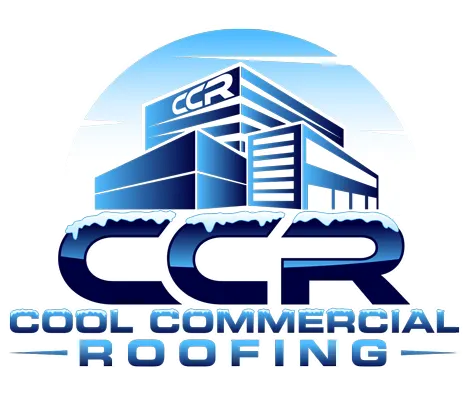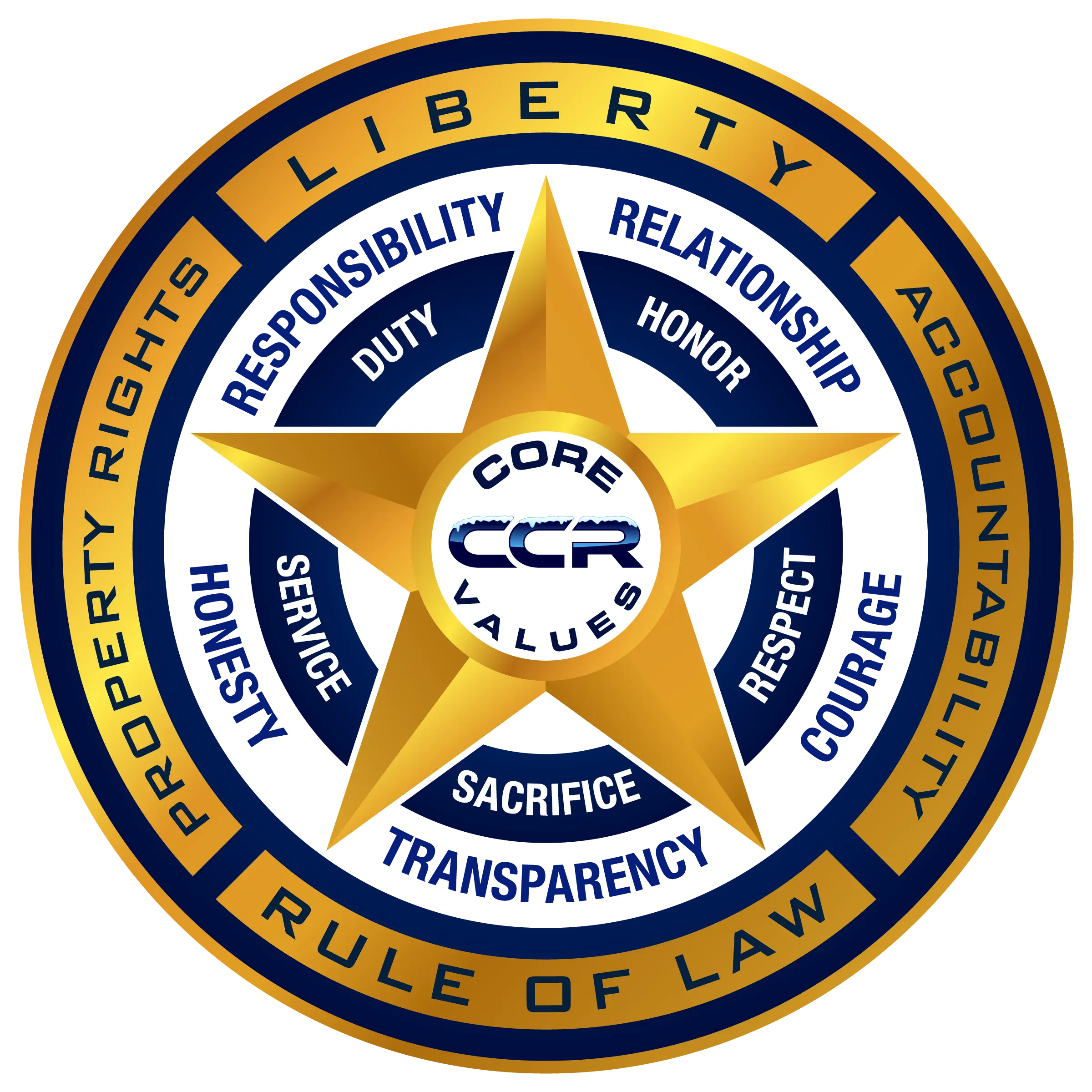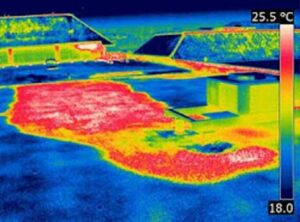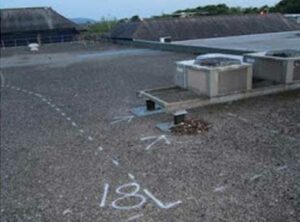ROOF INSPECTIONS
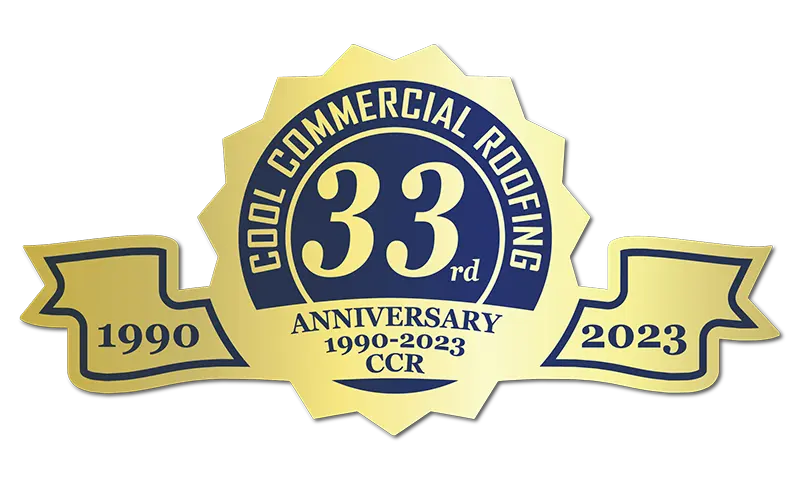

Energy Efficient Commercial Roofing With 35+ Years Of Experience
BI-ANNUAL ROOF INSPECTIONS
Why should building owners and managers schedule bi-annual roof inspections?
Bi-annual Roof Inspections will detect any damage or deficiencies found on the roof that can lead to expensive roof repairs and damage to the building’s interior contents caused by moisture infiltration.
A thorough bi-annual roof inspection also includes examining the building interior for signs of water infiltration like the stained ceiling tiles, flooring, interior walls, and mold formation.
On the roof, an inspection will also uncover,
- Improperly installed or failing flashings around roof penetrations, curb mounted mechanical equipment, parapet walls, changes in roof elevation and the roofs perimeter.
- Punctures in the roof membrane, open seams, and evidence of advanced roof membrane deterioration.
- Deteriorated or open cracks in caulking or other waterproofing sealants.
- Improper roof drainage resulting in “ponding” or “standing” water.
- Clogged drains, overflow scuppers, gutters, and downspouts.
- Debris: leaves, limbs, excess material, abandoned tradesmen tools, screws, nails, trash, etc.

Most roof system manufactures recommend or require annual roof inspections to be performed for the roof warranty to be maintained. Proper documentation and preservation of the inspection report is critical. Cool Commercial Roofing conducts a 32 point inspection check list complete with photographs and roof condition and diagnosis commentary. Cool Commercial Roofing provides repair and deficiency recommendations as well as budget forecasts to our valued customers.
When should bi-annual roof inspections be scheduled?
Early Spring and Late Fall. In general terms, the summer and winter months create the harshest conditions for roof surfaces. Inspections prior to these periods are highly recommended. The phrases, “don’t be penny wise and pound foolish” or “a stich in time saves nine” or “an ounce of prevention is worth a pound of cure” are the common-sense general rules to follow.
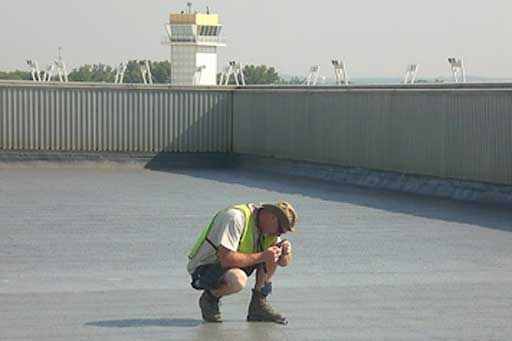
POST SEVERE STORM ROOF INSPECTIONS.
Severe storms can cause extreme damage to roofs. The consequences of the damage can go unnoticed or undetected for months and sometimes years. The damage can be either severe or miniscule.
Regardless of the severity of the damage, it is critical to have your roof inspected following major storm events. Often the damage can trigger the need for insurance coverage. Virtually all insurance policies contain language that requires “PROMPT NOTIFICATION”meaning, it is the policy holders’ responsibility to have their roof inspected and report the damage in a timely manner and filing a claim if warranted. Failing to report damage in a “timely fashion” can result in a claim being denied.
Cool Commercial Roofing has over three decades experience in assisting our customers with all phases of storm damage restoration and insurance claim filing compliance
CONTACT Cool Commercial Roofing TODAY
FOR A FREE ROOF INSPECTION
Moisture Detection
A THREE STEP PROCESS
Step 1
Leak Diagnosis
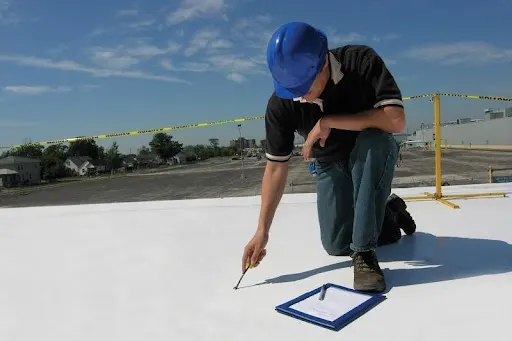
Step 2
Trapped Moisture Detection
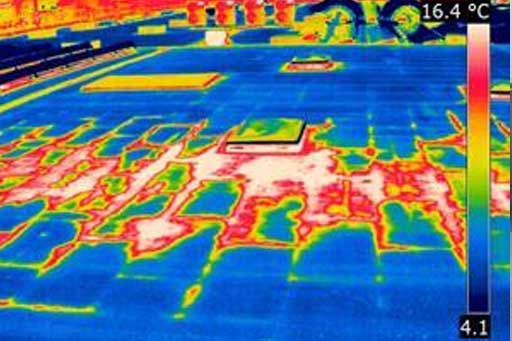
Step 3
Trapped Moisture Measurement
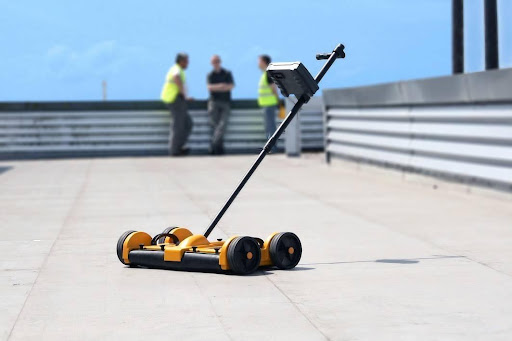
STEP ONE: Leak Diagnosis
The first step is to identify, mark and record all locations on the interior of the building where water has infiltrated the building. The next step is to inspect the roof and identify the source of the leak. Matching the interior damage location and the source of the leak on the roof can be a straightforward process. However, often the source of the leak on the roof and the interior location of the infiltration is not so straightforward. The two locations are often separated by several feet or yards. Understanding building and roof construction is a critical skill set that requires years of experience if you are going to accurately pinpoint the problem. Cool Commercial Roofing technicians have that experience and training. Our initial roof inspection will involve the following:
On the roof, an inspection will identify,
- improperly installed or failing flashings around roof penetrations, curb mounted mechanical equipment, parapet walls, changes in roof elevation and the roofs perimeter,
- punctures in the roof membrane, open seams, evidence of advanced roof membrane deterioration,
- deteriorated or open cracks in caulking or other waterproofing sealants,
- improper roof drainage resulting in “ponding” or “standing” water,
- clogged drains, overflow scuppers, gutters, and downspouts.
Each of these conditions can manifest themselves several feet away from the point of damage on the interior of the building.
The next step is to mark and record all possible locations on the roof that may be the cause of the problem. The next step is to prepare an estimate to repair the roof for the owner or the owner’s representative.
Eliminating the source of moisture infiltration through the roof is the first order of business. Based on the number of leaks discovered and repaired, the age of the roof, budget considerations and the owners long term plans for the property further investigation may be warranted.
STEP TWO: Trapped Moisture Detection
Eliminating the source of moisture infiltration through the roof surface is the first order of business. A second consideration is evaluating the presence of trapped moisture in the roof substrate.
When water penetrates a roof system it is absorbed by the roof system membrane and insulation materials and remains trapped between the roof surface and the roof decking. Over time this condition will result in the following:
- Premature roof system failure,
- Reduced roof lifespan,
- Warranty cancellation
- Loss of insulation R-Value (thermal efficiency) higher energy costs,
- Deck failure caused by rusting or deterioration,
All of these conditions contribute to additional costs over the useful lifespan of the roof. These costs can be extreme, however they can be avoided if properly diagnosed and corrected.
“An ounce of prevention is worth a pound of cure” is the general rule to follow.
Mapping Trapped Moisture
Finding roof leaks by using a Thermographic Survey is an often overlooked or misunderstood technique which allows experienced surveyors to identify trapped moisture within flat roofs and locate the source(s) of the leak.
When water enters a roof system through defects in the waterproofing layer(s) due to deterioration, tears, cuts, poorly sealed penetrations, seams, failed flashing or moisture sealants the roof system and insulation become saturated with trapped moisture. The building experiences energy loss because wet insulation has a lower “R” value than dry material thus providing less thermal resistance and higher energy expenses. Trapped water intrudes into the building’s interior causing damage and loss of productivity. When these conditions are not properly identified and eliminated, a concrete deck absorbs water, a wood deck rots, or metal deck components rust and prematurely fail.
Infrared roof inspection is the perfect tool for detecting moisture intrusion and directing repair efforts to only those areas which need it, thus minimizing costs and maximizing repair dollars.
A Thermographic Survey is an extremely powerful and effective method of finding flat roof leaks. The survey is non-invasive and causes no damage to the roof system. Our technicians will conduct the survey to identify the location(s) of water trapped in the roof system, thus enabling our technicians to pinpoint the exact cause and location of the leak itself.
Infrared Roof Thermography can prevent equipment down time, production losses, premature roof failure and help building owners and property managers find and eliminate roof problems. Due to the high cost of replacing a damaged roof, Thermographic Roof Inspections should be performed whenever a building is purchased, sold or leased.
Infrared Roof Surveys provide the diagnostic information necessary for developing an effective roof maintenance program, planning capital budgets and for making informed decisions when considering roof repairs, replacement, or restoration.
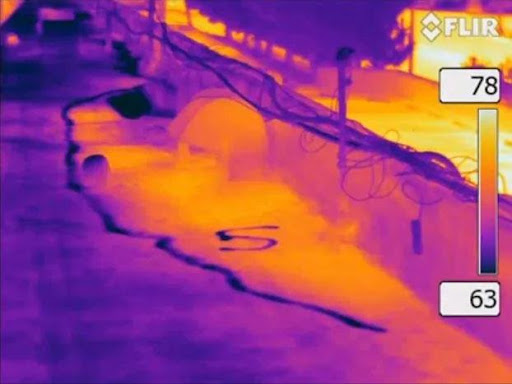
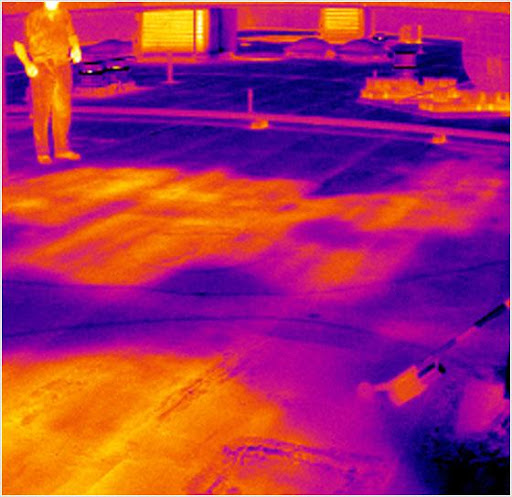
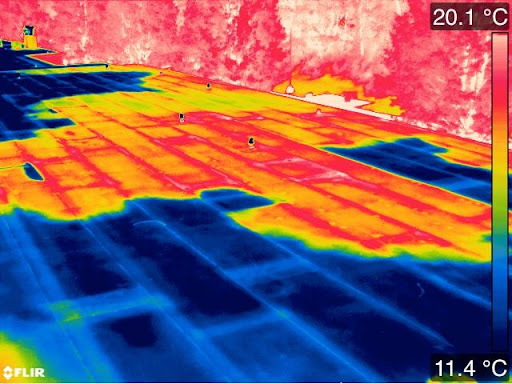
STEP THREE: Trapped Moisture Measurement
Infrared Roof Thermography used in tandem with Impedance Technology takes all the guessing and speculation out of the equation. These technologies provide empirical, scientific, and certifiable evidence that moisture has infiltrated the roof surface. Used in tandem they provide moisture location as well as moisture saturation levels.
Pinless Moisture Meter for Walls and Roofing Systems
The Tramex Roof and Wall Scanner is an instant, precise, multi-mode, non-destructive impedance scanner for evaluating moisture conditions in roofing (as per ASTM D7954), EIFS, foam insulation systems & other building envelope applications.
The RWS Multi-mode function allows for depth penetration and sensitivity selection and can help trace leaks and pin-point their source, which makes it a very beneficial moisture detector for walls and roofs.
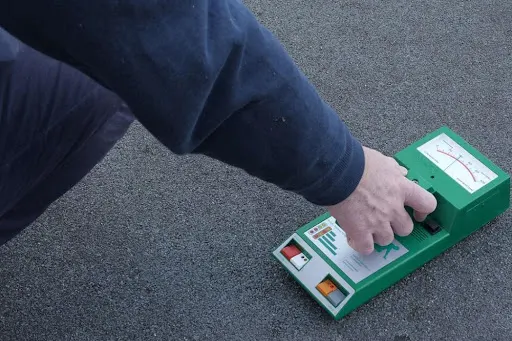
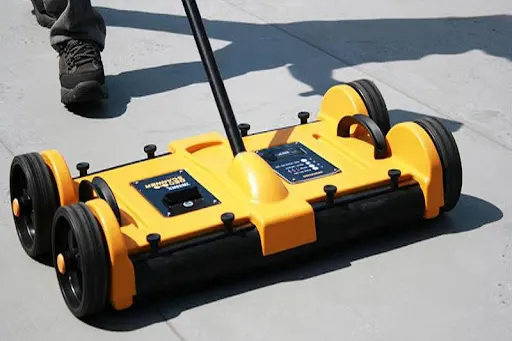
Non Destructive Scanner for Flat Roof Leak Detection and Surveying
The Tramex Dec Scanner is a mobile non-destructive impedance scanner designed for the instant surveying of moisture conditions in flat roofing and waterproofing systems per ASTM D7954.
The Dec Scanner roof moisture meter detects and measures leaks within the roofing structure. Featuring three ranges of sensitivity and with a maximum depth penetration of 6″ (152cm), the Dec Scanner enables the inspection of a variety of roof membranes and insulation thicknesses.
Readings are instant and a flat roof area of up to 100,000 square feet can be reasonably covered in a day.
Insurance Claim Assistance
Infrared Roof Thermography and Impedance Scanners are invaluable analytic and diagnostic tools when establishing roof damage caused by a storm event. They provide irrefutable and certifiable evidence of damage when a building owner/policy holder or property manager files an insurance claim.
Insurance claims are a time consuming and daunting experience that goes far beyond just dealing with the damage.
Insurance policies place the “Burden of Proof” on the insured. When a claim is filed the insured must prove that the damage was caused by the named storm event. Finding a building owner/policy holder or property manager that is “Skilled in the Art” of roof damage assessment and meteorological interpretation is a very rare, if ever, occurrence.

